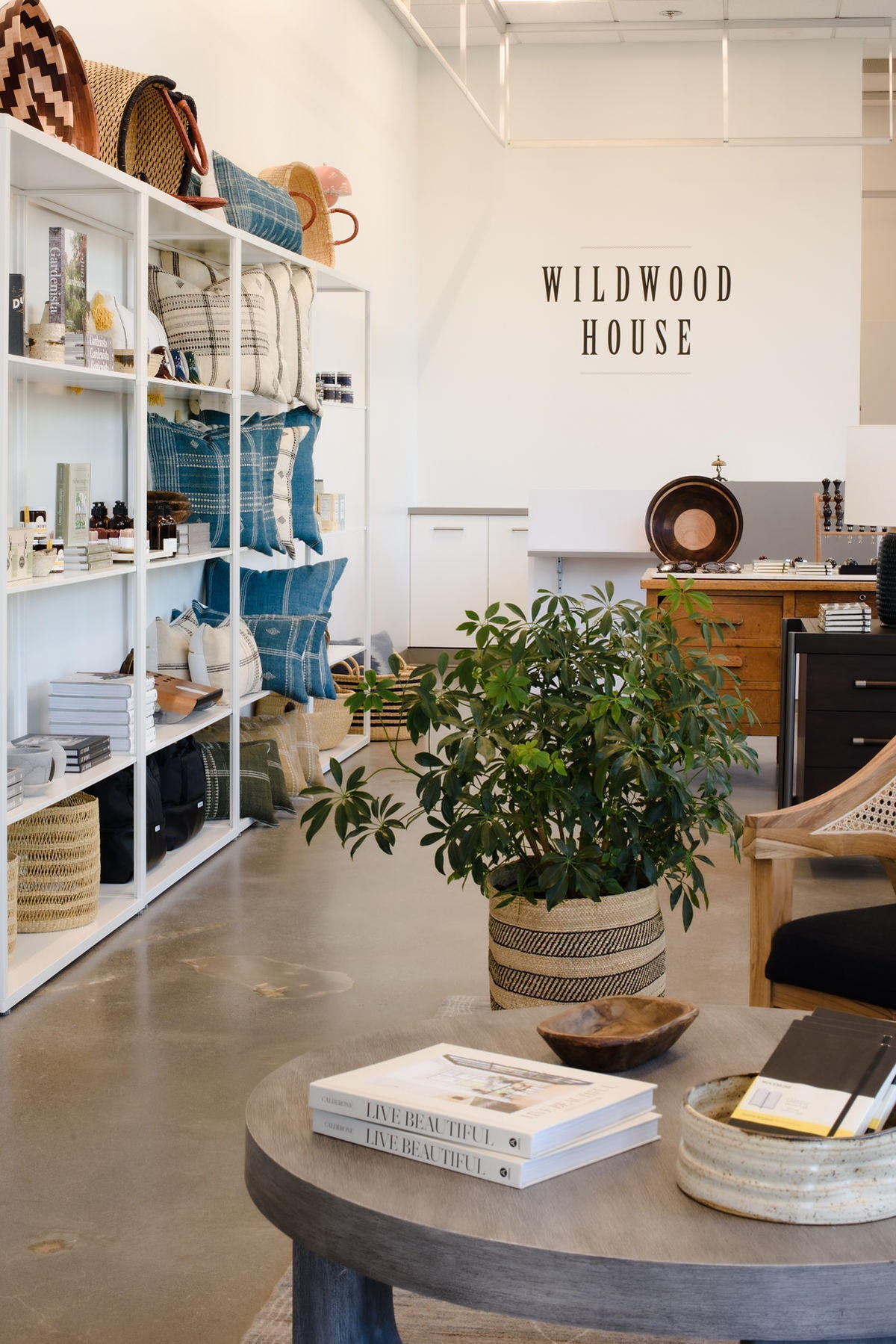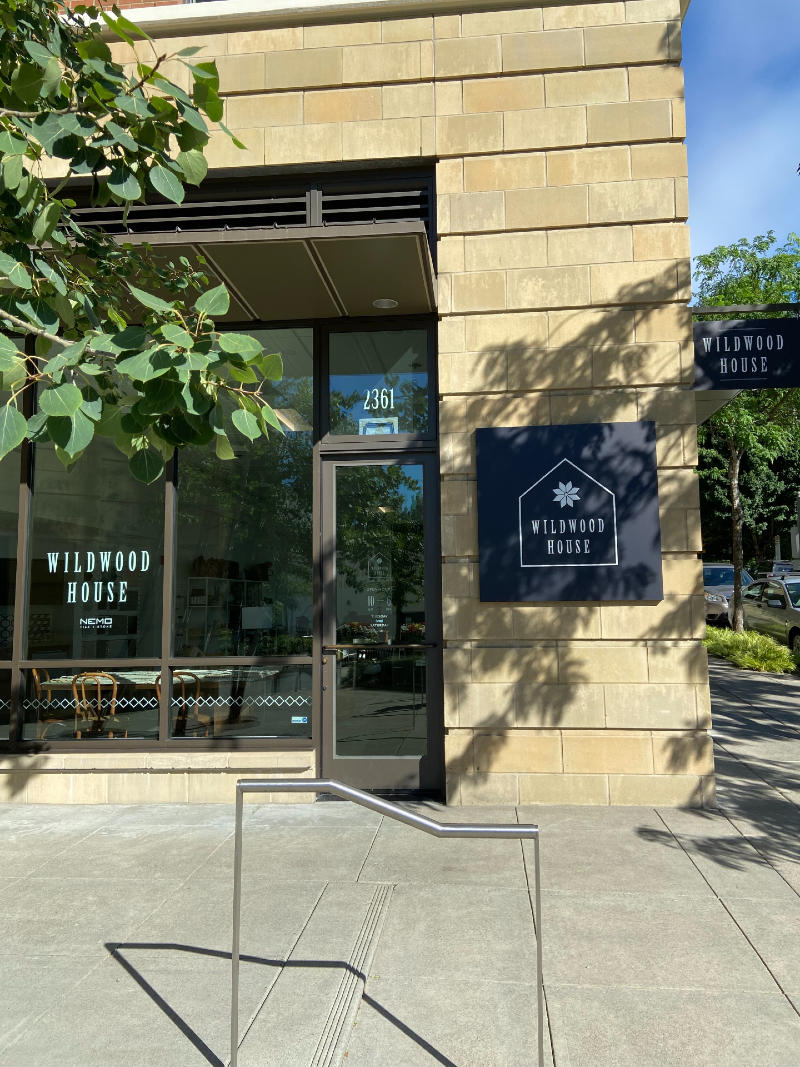In Business of Home’s new series Shop Talk, we chat with owners of home furnishings stores across the country to hear about their hard-won lessons and their challenges, big and small—and to ask what they see for the future of small industry businesses like theirs.
This week, interior designer Brittney Herrera discusses her experience at Wildwood House, a shop she opened in Portland, Oregon, this June with her mother, Terry Blaskowsky. With a background designing residential and commercial office spaces, including for multiple Fortune 100 companies, Herrera zeroed in on a very 2021 niche in her first brick-and-mortar store—work-from-home products like sleek ergonomic chairs, task lighting, minimalist storage cabinets and posture-correcting stools. The assortment is completed by a mix of striped pillows, quirky ceramics and other home goods for those who need a break from thinking about work.
You opened your first store during the pandemic. Why did you want to expand to retail?
Really, the bulk of our business has come from our existing relationships, our clients on the interior side. Being able to connect with people we weren’t working with was really important to us—to be able to reach a wider audience, and to give peoples’ employees the opportunity to buy our products without having to go through any formal procurement process. So, it really started out organically. All of our core business was coming from the procurement side, and we were able to subsidize a retail opportunity with that. But having that store showroom presence also benefits our manufacturers, and it connects them to a broader audience.
How would you describe the vibe of the store?
I would say that it’s collected. We focused on items that could seamlessly integrate into a variety of styles and function really well to create that layered, collected look of a life well lived, well traveled. Things that are potentially investment pieces that you’ll cherish for a lifetime.
Who are your favorite vendors?
We really love working with Humanscale. We’ve found this really elegant way of combining their more modern aesthetic into homes that are not as slick and modern, to create these really transitional—again, “collected”—environments. People love the products. They work well and are highly functional. They’re beautiful. People are having a better ergonomic experience, even in their work-from-home [life].
What’s your favorite product in the store right now?
The Como LED lamp. I love it so much because it’s cordless and you can take it anywhere, in any kind of desk setup. If you’re on your dining room table for the day, you can pop this over and give yourself some much-needed light, and you don’t need an outlet. And it’s beautiful, so it brings me joy.
Is there a particular product that always sells out?
Our foot rockers. They’re at a really great price point. It corrects most people’s posture right away and makes them feel like, Oh, my gosh, I can’t live without that.
What advice do you wish you could give yourselves on opening day, though it wasn’t that long ago?
Just have fun and embrace the moment. Reaching out to the community and seeing how amazing everybody has responded to our opening has been really wonderful, and just taking time to enjoy that moment is important.

What’s the biggest existential challenge for your business?
I think our concerns are the same as our opportunities. We really want to be able to connect with the most people possible to help them to create their best home experiences. I got into this business to make workplaces more effective. When everybody went to work at home, it was an existential crisis for me because I’m creating these workplaces that are supposed to be magnetic—and are no longer occupied. I think that the opportunity is to bring that same thoughtful curation to everybody at home and let them choose for themselves what’s important to them and what will layer with their style—but that connects them to a more efficient and effective work life, which I believe increases their overall life purpose. I think it’s really important work that we’re doing.
And what is the biggest everyday challenge?
Not enough hours in the day. It’s really about time management and a balance of abilities when we’re trying to do so much.
Is there something you wish that more customers understood?
This is kind of a new market for me. I’ve always had the benefit of a lot of client trust that we’re going to connect them to the right solution. But I would say that lead times have been really challenging to communicate—we have to manage folks’ expectations around getting product in a reasonable amount of time, because “reasonable” has changed. People want an on-demand world. That impacts people—how much they will buy and how much weight they’ll put on the quality of a product if they have to wait for it. Some people are all in, and other people, not so much.
What kind of supply-chain issues are you seeing?
We’ve seen wood being a real challenge to get, so some of our artwork framed in wood has had really long lead times. Normally it would be a couple of weeks, but we’re seeing a couple months or more.
How do you convince people that those lead times and quality products, made by real humans with interesting stories, are worth it?
We’ve been relying on our social media to communicate those stories to people we don’t see in person. People really do connect with those makers—we have [posted] really impactful stories connecting women-owned businesses and minority-owned businesses to our clients, and that has been effective. We have also started thinking about doing videos of product so people can understand not only how to use it (if it’s an ergonomic solution), but also the quality. When you’re panning over something that was handmade, it’s just such a different feel than a still [image].

What’s your relationship like with your landlord?
I would say our relationship has been really positive. We have a great relationship with the property manager—she’s so responsive and just really understands what it takes to run a business. She’s been really supportive and a good connector for us to the community. We’re very happy.
What are some Portland-specific concerns that might interest shop owners in other places?
Portland has such a maker culture, and people love the story of that homegrown business. We are located one block off of the main shopping corridor on Northwest 23rd [Avenue], and that definitely limited our foot traffic initially. We are also looking in the face of a condo building, so we get a lot of traffic from that but not nearly the volume that we would get if we were right on 23rd. That’s just site selection. We always knew we were going to be a destination. When that has proven true, it’s good, because people who come tend to want to buy. We’re looking at, again, really trying to create that presence for reaching the most people. We have some more work to do on advertising.
What is the future for small businesses like yours?
In some ways, I feel like we’re a product of the pandemic. What we are offering is an elevated work-from-home and home-life experience. That has been so important—so much emphasis has been placed on that since the pandemic. People understand and appreciate the value of home, what it means to really live there and live well, which has only done good things for our business. We continue to work in both commercial and residential spaces, so for us, the future is bright. It’s diversified. It’s helping people when they really need it. I think we’re occupying and filling a space that nobody else is really in, so I feel really good about it.
Homepage photo: Terry Blaskowsky (left) and Brittney Herrera, the mother-daughter owners of Wildwood House | Courtesy of Wildwood House




























